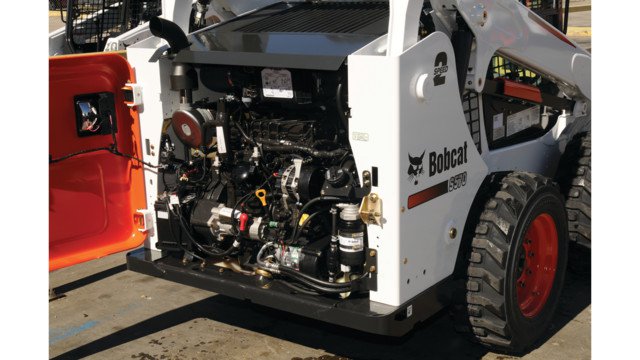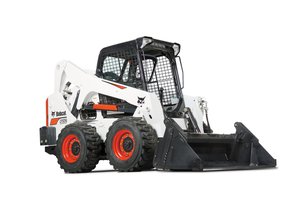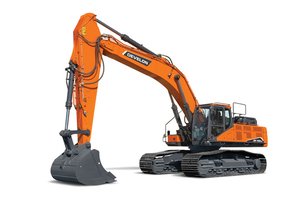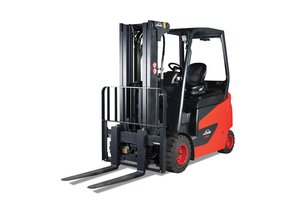Evolution of Emission Standards
October 1, 2015

In a recent For Construction Pros article, Tom Connor, Bobcat product specialist, explains the importance of technologies that have been used to reach Tier 4 status in machines such as compact loaders and compact excavators, and the importance of proper machine maintenance.
The evolution of emission standards in the compact equipment industry has been happening for quite some time. In 2015, the U.S. Environmental Protection Agency (EPA) has mandated that all 75-horsepower and above nonroad machines reach full Tier 4 compliance.
The goal of the emission standards for nonroad equipment is to lower harmful exhaust emissions, such as particulate matter (PM) and nitrogen oxides (NOx), to help promote cleaner air and maintain a sustainable environment.
For rental houses and equipment owners, it is important to take the time to learn about technologies that have been used to reach Tier 4 status in machines such as compact loaders and compact excavators, and the importance of proper machine maintenance.
Incorporating Technology
Over the years, multiple technologies have been added to help meet EPA emission standards. These technologies range from changing mechanically injected fuel systems to electronically injected fuel systems, and adding various types of aftertreatment. Cooled exhaust gas recirculation (CEGR) was introduced during the Tier 3 stage to help reduce NOx emissions and help lower combustion temperatures. Low-sulfur diesel was also introduced in nonroad machines to help increase the life of CEGR system components.
Meeting the emissions regulations has required some or all of the following four technologies: an engine control unit (ECU), a high-pressure common rail (HPCR) system, a diesel oxidation catalyst (DOC) and a diesel particulate filter (DPF).
- ECU monitors and controls fuel delivery, injection timing and injection occurrence.
- HPCR is an advanced fuel injection design controlled by the ECU that regulates fuel pressure and injection timing.
- DOC is a special catalyst that reacts with engine exhaust upon contact, transforming some of the emissions into harmless substances.
- DPF is a “ceramic wall flow” filtration system that separates PM from engine exhaust. A cleaning process called regeneration burns off accumulated PM and is monitored by the ECU.
These four systems were major advancements toward clean-operating diesel engines. In 2015, 75-horsepower machines and above will include an additional system, selective catalyst reduction (SCR) to meet Tier 4 requirements. SCR uses an ammonia- and water-based liquid called diesel exhaust fluid (DEF). By combining exhaust with DEF, the engine reacts with a SCR catalyst. This reaction turns harmful NOx into harmless nitrogen and water vapor.
Maintenance and proper oil
As all new machines are now required to meet Tier 4 compliance, it’s important for rental store owners to understand the emission systems and how to properly maintain them. To help keep maintenance to a minimum, some manufacturers equip their machines with non-DPF engines. With non-DPF engines, independent rental stores don’t have to worry about cleaning or replacing diesel particulate filters. Another benefit of a non-DPF engine is that the machine doesn’t have to burn extra fuel to heat the filter during the regeneration process. That means rental customers can continue their operation without shutting down the machine on their jobsites.
Following the recommended maintenance schedule for engine oil and filters and hydraulic filter changes helps promote the machine’s long-term durability and provides many cost benefits to rental operations. In years past, manufacturers have increased their service times from 150- to 200-hour intervals to 500-hour intervals because of more efficient engines, better oils and additives. It’s cheaper to properly maintain your rental machines and keep them in good working order rather than to let problems go and have to take care of the issue after the fact.
Making sure the proper oils match the newer engines is crucial to rental maintenance. Use API CJ-4 engine oil — 10W-30 or 15W-40 grades — which can be purchased from your local equipment dealer. If rental store owners, mechanics or equipment operators fill the machine with the incorrect engine oil, it can cause costly damage to the machine’s emissions components. Those components can become plugged, corroded and ultimately not work efficiently.
Tier 4-rated machines with 75 horsepower and above will require DEF, and there are critical requirements for the handling and usage of DEF fluid. Be sure to work with your local dealer to better understand how to handle the fluid.
Follow these maintenance tips to help maximize machine life:
- Complete a routine machine overview.
- Check fuel levels and hours on the machine.
- Check the engine oil and filter; add oil as needed.
- Check the engine air filter.
- Clean debris from grill, oil cooler and radiator; add coolant mixture if required.
- Remove trapped water from the fuel filter.
- Examine hoses, bolts and tires for damage.
By understanding the technologies needed to make the shift to Tier 4 emission standards and the associated maintenance needed, rental house and equipment owners can be better informed and prepared for the change.



